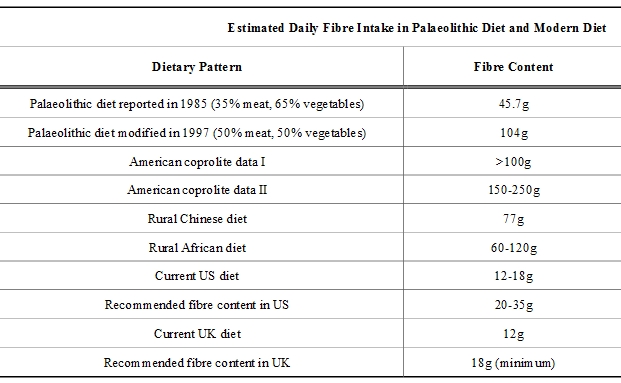I posted about the Cubans’ Special Period back in 2013. This is a revisit of that post:
What if we could conduct a big experiment, put everyone in the country on a diet higher in carbohydrates, lots of fruits, vegetables, starches, and other plant foods, and lower in animal products, fat, and protein. Have them be more active. Have them eat less. Would they lose weight? Would it lower their risks for diabetes, heart disease, cancer?
Gary Taubes and others in the low-carb community may argue that it wouldn’t. In his book, “Good Calories, Bad Calories,” Taubes said:
“Any enforced decrease in intake will have to induce a compensatory decrease in expenditure – a slowing of the metabolism and/or a reduction in physical activity.”
“Neither eating less nor exercising more will lead to long-term weight loss, as the body naturally compensates.”
“Obesity is a disorder of excess fat accumulation, not overeating, and not sedentary behavior.”
“Expending more energy than we consume does not lead to long-term weight loss; it leads to hunger.”
A situation much like I described at the beginning of this post came to pass in Cuba in the early 1990s. The Soviet Union had just dissolved and Cuba was left without its major trading partner. It entered a time of economic hardship known as the Special Period.
“Manuel Franco describes the Special Period as “the first, and probably the only, natural experiment, born of unfortunate circumstances, where large effects on diabetes, cardiovascular disease and all-cause mortality have been related to sustained population-wide weight loss as a result of increased physical activity and reduced caloric intake”.
The people of the island by necessity adopted diets higher in fiber, fresh produce, and ultimately more vegan in character.”
The latest study by Franco continues to support this:
Population-Wide Weight Loss And Regain In Relation To Diabetes Burden And Cardiovascular Mortality In Cuba 1980-2010: Repeated Cross Sectional Surveys And Ecological Comparison Of Secular Trends, British Medical Journal, April 2013
His video abstract:
From his study:
“Severe shortages of food and gas resulted in a widespread decline in dietary energy intake and increase in energy expenditure (mainly through walking and cycling as alternatives to mechanised transportation). … The largest effect of this economic crisis occurred over a period of about five years [1991-95, the “special period”], resulting in an average weight loss of 4-5 kg [9-11 lb] across the adult population.”
…
“We found that a population-wide loss of 4-5 kg in weight in a relatively healthy population was accompanied by diabetes mortality falling by half and mortality from coronary heart disease falling by a third. Furthermore, a rebound in body weight was associated with an increased diabetes incidence and mortality.”
And:
“Overall diabetes incidence decreased by 53% from its peak in the pre-crisis years (1986) to its lowest point after the crisis (1996 and 1997). Subsequently, incidence rose by 140% from 1996 to 2009.”
In an accompanying editorial, Walter Willett of the Harvard School of Public Health in Boston wrote that the findings:
“… add powerful evidence that a reduction in overweight and obesity would have major population-wide benefits. To achieve this is perhaps the major public health and societal challenge of the century.”
What were Cubans eating? From The Atlantic:
“It wasn’t only the amount of food that Cubans ate that changed, but also what they ate. They became virtual vegans overnight, as meat and dairy products all but vanished from the marketplace. … Protein consumption dropped by 40%.* People were forced to depend on what they could grow, catch, and pick for themselves – including lots of high-fiber fresh produce, and fruits, added to the increasingly hard-to-come-by staples of beans, corn, and rice.”
* “Diet composition in Cuba also changed during the study period. By 1993, carbohydrate, fat, and protein contributed 77 percent, 13 percent, and 10 percent of total energy, respectively, whereas in 1980 their respective contributions were 65 percent, 20 percent, and 15 percent. The primary sources of energy during the crisis were sugar cane and rice.”
– Impact of Energy Intake, Physical Activity, and Population-wide Weight Loss on Cardiovascular Disease and Diabetes Mortality in Cuba, 1980–2005, American Journal of Epidemiology, 2007
________
The experience in Cuba challenges many of Gary Taubes’ claims:
- He says that when you eat less, you will be less physically active (“Any enforced decrease in intake will have to induce a compensatory decrease in expenditure – a slowing of the metabolism and/or a reduction in physical activity.”) Cubans ate less and were more physically active.
- He says eating less will not lead to weight loss. Cubans ate less and lost weight.
- He says exercising more will not lead to weight loss. Cubans exercised more and lost weight.
- He says eating more carbohydrates leads to weight gain, and “the fewer carbohydrates we consume, the leaner we will be.” Cubans ate more carbohydrates and lost weight.
- He says carbohydrates are responsible for diabetes and heart disease. Cubans ate more carbohydrates (mostly rice and sugar) and had much lower rates, as well as deaths from, diabetes, heart disease, and cancer. They had higher rates, and deaths from diabetes, heart disease, and cancer when they ate fewer carbohydrates and more protein.
So, Cubans ate less, ate more of a vegan diet, and were more physically active … and their rates of chronic disease dropped precipitously. I think there’s a lesson there.
Related:
Modest Population-Wide Weight Loss Could Result In Dramatic Reductions In The Burden Of Type 2 Diabetes And Cardiovascular Disease, News release from BMJ, April 2013
How Cubans’ Health Improved When Their Economy Collapsed, The Atlantic, 18 April 2013




